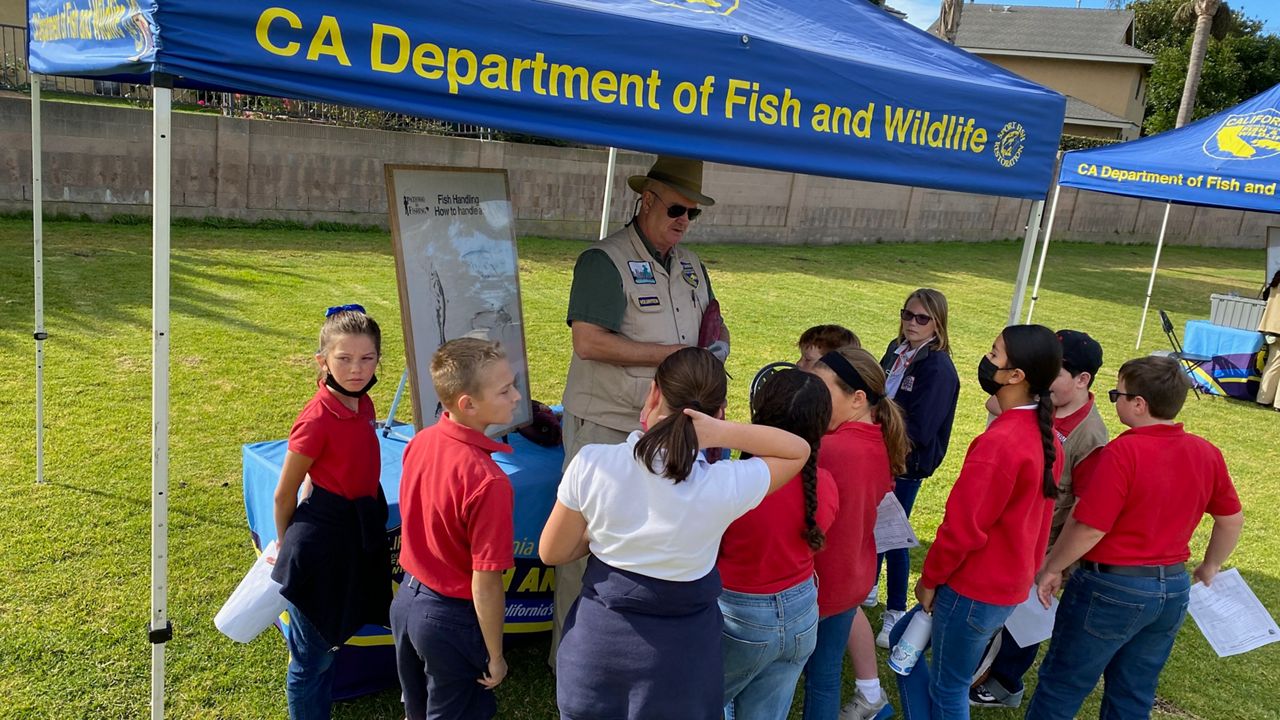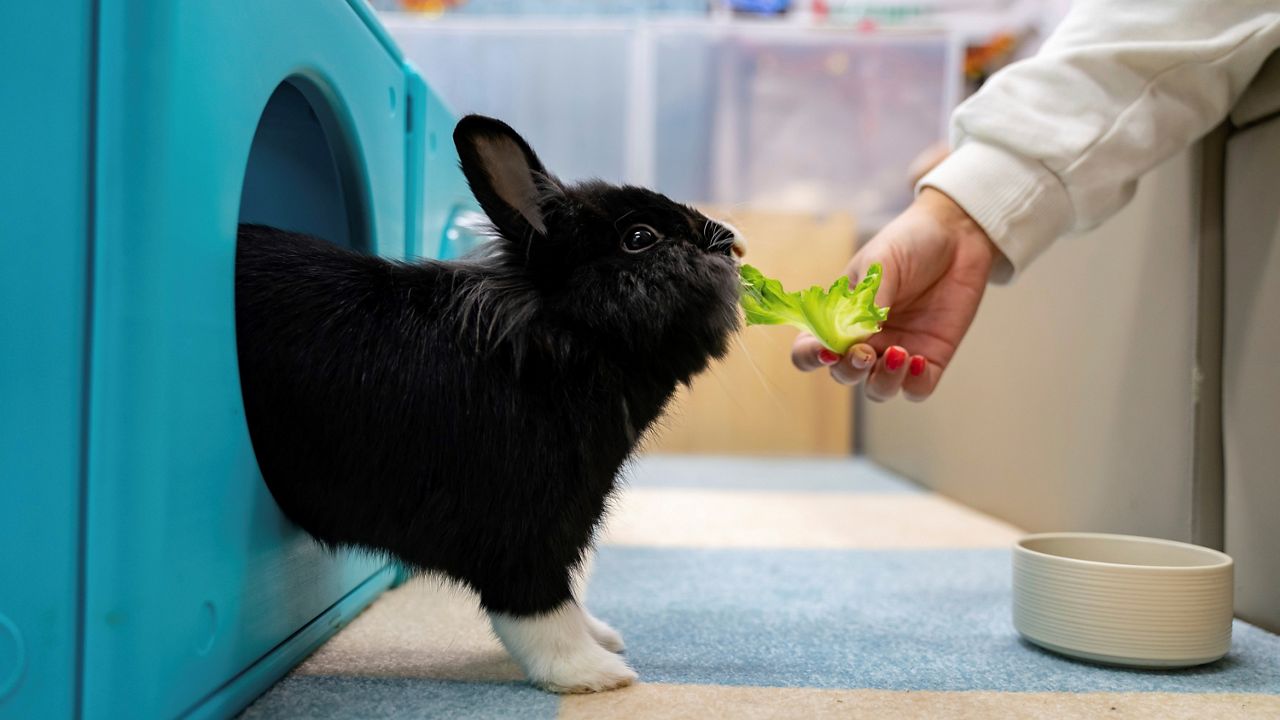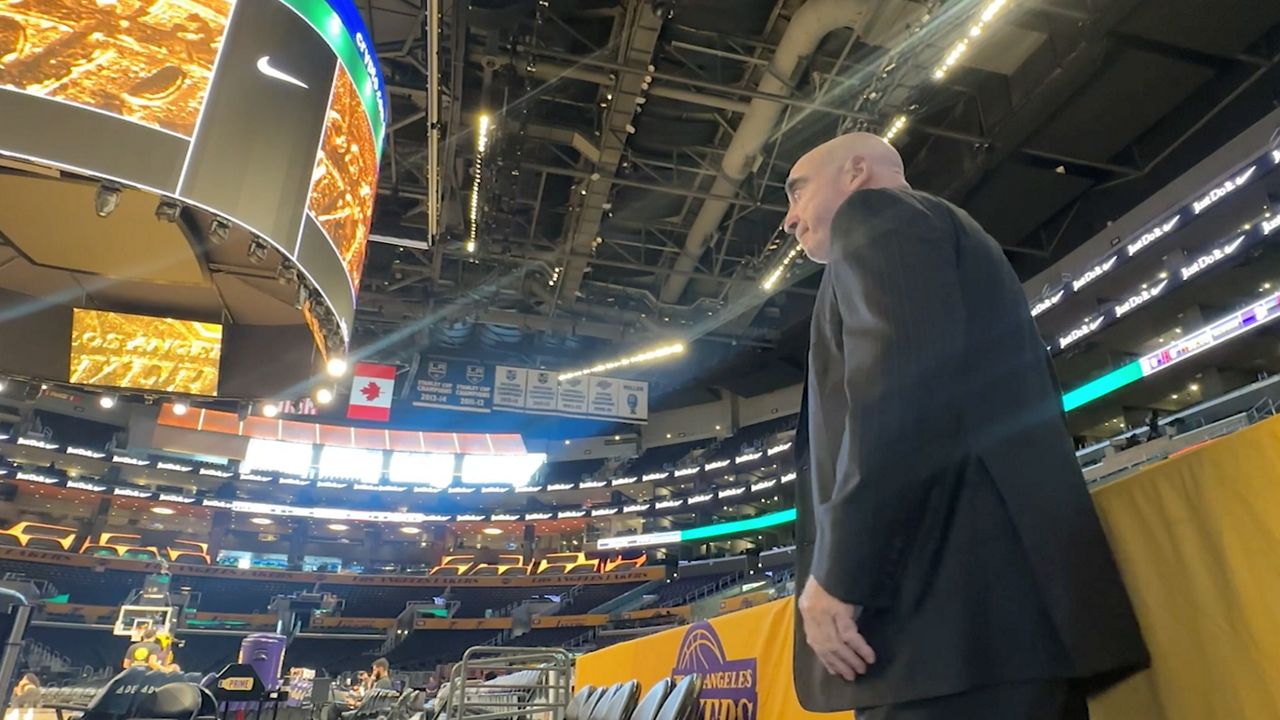HUNTINGTON BEACH, Calif. — Instead of morning classes on Friday, kids from the St. Bonaventure Catholic School crossed the street to Carr Park. There, in the pond waiting for them, were trout. Rainbow trout.
The California Department of Fish and Wildlife had stocked the pond the night before with 500 pounds of fish, or about 250 individuals. It’s one of about 20 educational events the department tries to put on each year in Los Angeles, Orange and San Diego Counties.
This one, in Huntington Beach, paired fish and wildlife educational staff with volunteers from local fishing clubs and Huntington Beach Police.
The students huddled in tight groups with springy legs and excited laughter. Organizers had put together five different stations to help the students learn about phish biology, habitat and common fishing courtesy.
It is the seventh year of the outreach event, typically done annually but interrupted recently by the ongoing pandemic.
The idea is to teach the youngsters about how best to protect and interact with the watery parts of the state, leaving as little footprint behind as possible.
“If you don’t know anything about the fish you’re trying to catch, chances are you’re not going to do very well,” said Brian Young, who oversees educational programs and fishing in cities for the Department of Fish and Wildlife.
For the various involved groups, the motivations vary. Police want to conduct outreach, gun and angler clubs want to pass skills to the next generations, and educators want their students to get some fresh air and learn about wildlife.
They accommodate all goals at the event.
Charlyn Moltane, there with her husband Frank, was there from the Huntington Beach Fishing and Recreation Club.
“The event being outdoors and the fish is an immediate motivator to the kids,” said the retired elementary school teacher. “It’s a new excitement they’re experiencing for the first time. They need new words to describe it because it’s different from anything they’ve ever done.”
They looked on as various fish and wildlife educators broke down some of the attention-span intensive regulations of fishing. One station leader brandished a stuffed toy rainbow trout. Another leader told the kids about which fins do what and how fish breathe. One station let them practice casting a line. They lined eight rods up on the grass, where the downy leavings of the resident geese and ducks feathered the grass.
After the small groups left behind the dry erase boards filled with regulations or drawings of trout, they ran to the water.
Lining the edges of the pond were eager volunteers in lawn chairs, and dozens of PVC pipe driven into the mud as makeshift fishing rod holders.
The fish were slow to bite, many preferring the cool bottom to the warmer surface. Pelicans floated by sunken fishing lines, hungry for their next meal. All waited, struggling to stay hushed, for the fish to bite.










